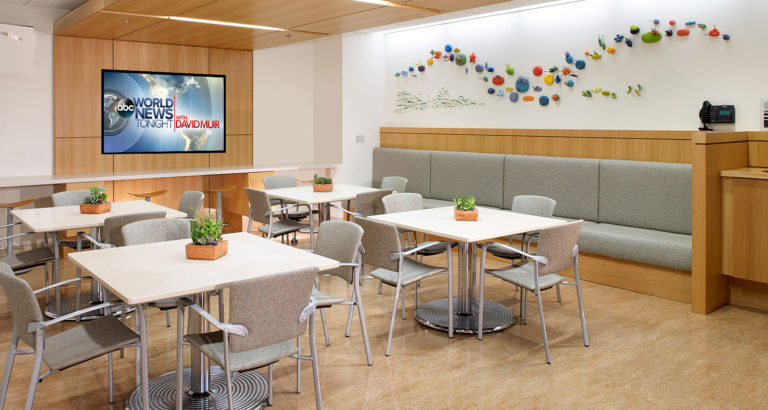3 healthcare trends you should know about

Just as screens are an indispensable part of our everyday lives, they’ve not only become a useful tool in healthcare facilities, but also helpful devices in keeping patients entertained and distracted from the stress of being in the hospital. Several new trends are starting to bubble up with the rise of the importance of patient satisfaction and reducing readmission rates. In this blog post, we’ll explore three of those developments.
“Bring Your Own Content”
In a healthcare setting, patients are away from their comfort zone. They’re not able to participate in the things they regularly do and enjoy. But, by allowing them to “bring their own content,” you can offer them some of the comforts and familiarity of home to help reduce distress.
Glen Rocco, vice president of sales at PDi Communication Systems, Inc., points out that this has been happening for years. “First it was DVDs to play in healthcare-grade DVD players in the room,” he explains. Thumb drives and other digital mediums that people could bring in were also typical.
“With the rise of social media and subscription services like Netflix and Hulu, there’s the push to allow that media to be brought in,” states Glen. Some facilities are using Smart TVs to allow that content to be screencast across the room. Others that aren’t may have plugs or connectors where you can broadcast from a tablet or other handheld device.
A few things to consider before implementing a “bring your own content” initiative within your own facility include:
- Security: Make sure your network is secure before you start allowing patients and their loved ones to bring in their own content.
- Intuitive systems: You’ll want to cater systems toward a less frequent user, making it easy to use and understand.
- Filters: You’ll need to have filters in place it to keep users off of inappropriate websites, or from downloading or displaying inappropriate content, which many televisions are equipped to do using the Motion Picture Association ratings or video game ratings. The same exacting should be applied to all mobile devices.
Larger Screens
“Historically, a screen in a room was just a television showing your standard channels and, in some instances, maybe enhanced programming,” explains Glen. However, now screens are being used to view web pages, instructions for discharge or other educational content — all of which can feature large amounts of text.
“Whether someone doesn’t have their glasses on or they’re far away from the screen, displays need to be larger to see the text,” he adds.
A patient may be reading a consent form related to a procedure they’re having soon, or digging into specific instructions on treatment after being discharged. It needs to be legible from anywhere in the room.
Intuitive User Interfaces
Because the elderly population is a dominant user of the healthcare system, less frequent users need to be considered, especially as new technology comes along. Because they may not know how to utilize it efficiently, intuitive user interfaces can help reduce their need for assistance with these devices and systems.
Voice recognition and voice commands are also helpful for patients of all ages. “You may have a patient who has IVs in both arms, or they can’t really move a lot or navigate for other reasons, so simple voice-activated commands, such as ‘turn TV on’ or ‘change channel,’ can be extremely useful,” explains Glen.
Additionally, nurses or doctors can initiate the viewing of content, such as educational campaigns, using voice commands. “They can even pull up something on a PC or any other device and push it to a room,” he says.
Did you find this article helpful? Share it with your network on social.
